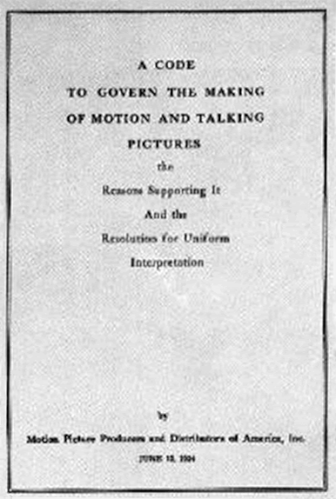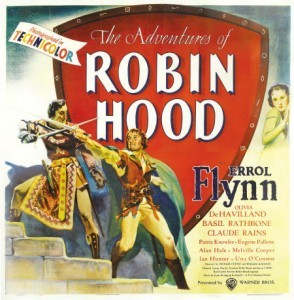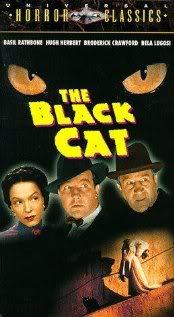Since it came up in The Children’s Hour, I though a post on the “Haye’s Code” is in a order.
###Motion Picture Production Code
In the 1920’s, a series of scandals rocked Hollywood and led to 37 states introducing their own legislature censoring films. Wanting to improve their image, several studio heads approached Presbyterian elder Will H. Hays about setting up a code of standards to which all films will comply. He was paid what was then considered a “lavish” sum of $100,000 a year to do so. The thinking was that it would be easier to the studios to follow one standard set of rules, then to have to edit every film for each individual state.
Freedom of speech issue you may think, however, in 1915 the Supreme Court ruled that “Freedom Of Speech” did not extend to motion pictures. That ruling would stand until 1952, nearly 40 years, before the Supreme Court would revisit and overrule it.
A sample of the production code:
-
Pointed profanity – by either title or lip – this includes the words “God,” “Lord,” “Jesus,” “Christ” (unless they be used reverently in connection with proper religious ceremonies), “hell,” “damn,” “Gawd,” and every other profane and vulgar expression however it may be spelled;
-
Any licentious or suggestive nudity-in fact or in silhouette; and any lecherous or licentious notice thereof by other characters in the picture;
-
The illegal traffic in drugs;
-
Any inference of sex perversion;
-
White slavery;
-
Miscegenation (sex relationships between the white and black races);
-
Sex hygiene and venereal diseases;
-
Scenes of actual childbirth – in fact or in silhouette;
-
Children’s sex organs;
-
Ridicule of the clergy;
-
Willful offense to any nation, race or creed;
Initially, the Production Code was fairly vague and the people overseeing lacked both the authority and manpower to enforce it. One man would review cuts of films, while another was responsible for reviewing scripts. Two people were hardly enough to keep up with demand, when you had six Hollywood studios each producing 50-60 films a year, and dozens of independents also making movies. Not to mention, the language of the code was vague and up to personal interpretation.
However, in 1934, an amendment was made to the code establishing the Production Code Authority. The Authority would have two offices, one in LA, and the other in New York (where many films were produced and most Hollywood studios had their corporate offices.) With added manpower and money, the Authority expanded the Production Code and began enforcing it strongly. Ridiculous rules were added, such as the rule that any character that commits a murder must later be killed in the film. For an example of this, see the 1956 film The Bad Seed.
The Production Code would stay in full force, until the early 1950’s. Surprisingly it was television that would help deliver to a death blow to the Code. TV delivered entertainment to the homes of millions of Americans and was slowly stealing away the audiences for feature films. Faced with new competition, the studios began delivering more explicit content that TV could not show, as it operated under an even more strict form of censorship. The Motion Picture Association of American was also granted the ability to override PCA rulings and allowed films to be released against objections.
As the 1950’s closed, more and more foreign films were being brought to the US, which were not subject to the PCA rules. The end of the 50’s also saw the end of the classic Hollywood studio system, when all films studios were forced to sell off their theater chains, following the anti-trust lawsuit of the United States v. Paramount Pictures, Inc. - Wikipedia. With less revenue, and even more competition for screens, studios fought back more against the Production Code.
By the 1960’s, the PCA had little ability to enforce it’s rules and much of the production code was outdated. With people less likely to boycott explicit films, and even with boycotted films unlikely to suffer much damage, the PCA was disbanded. The MPAA would then establish a ratings system for all motion pictures released in the US.



















